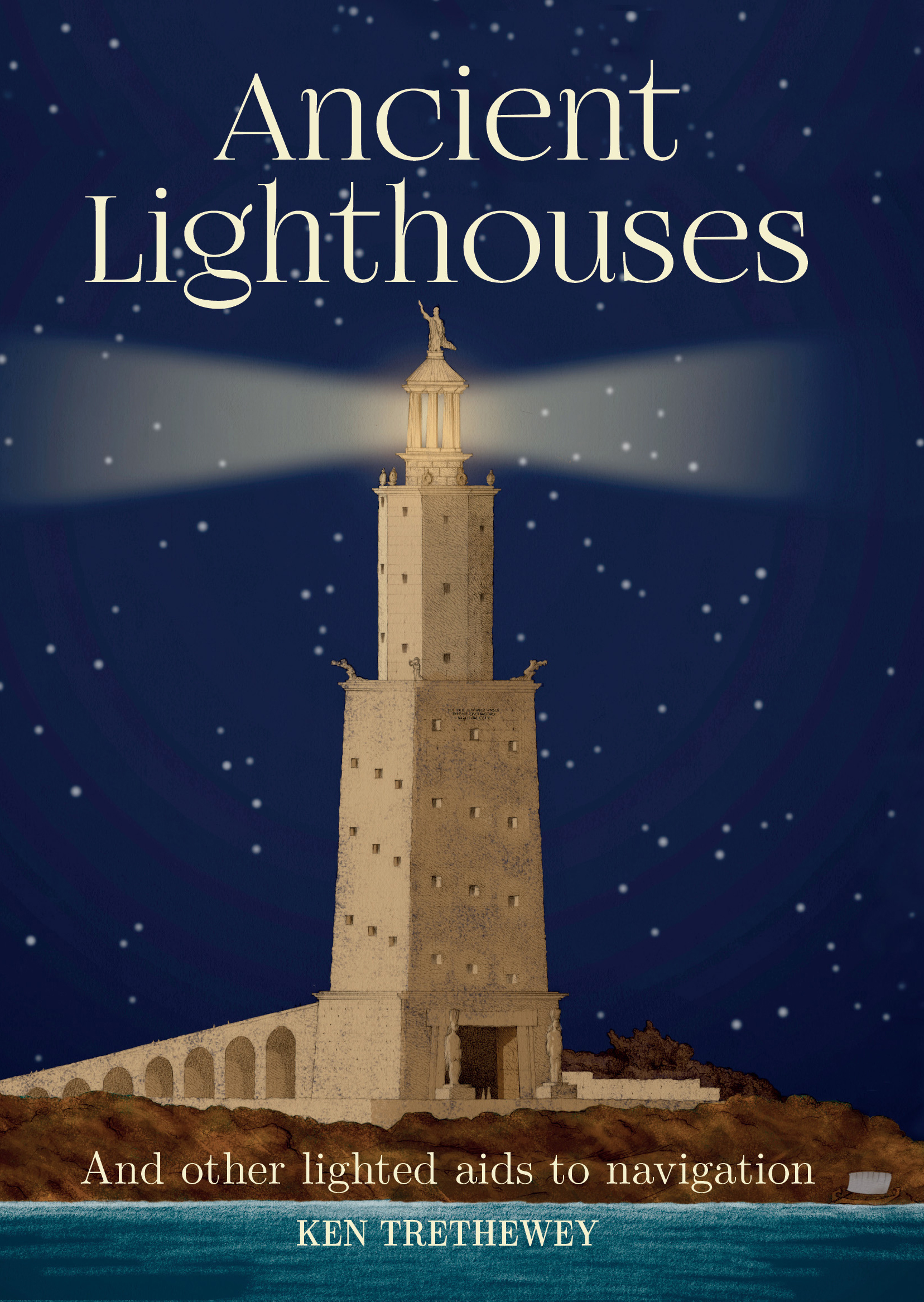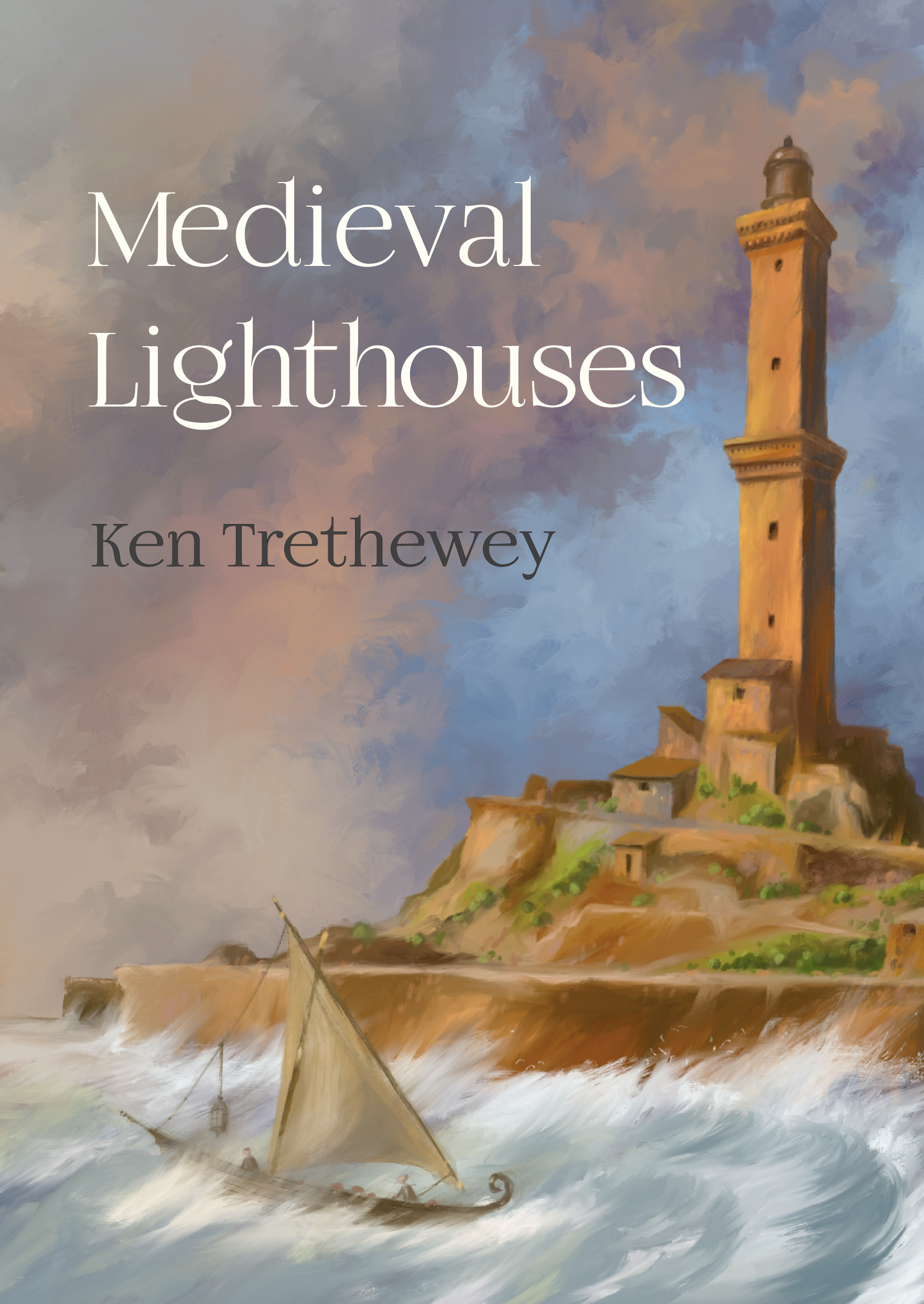Pharology: The Story of Lighthouses
A new definitive work
This site will become the first complete study of the history and development of lighthouses, a life-long project undertaken by pharologist Dr Ken Trethewey.
There are three volumes associated with this study. The first is Ancient Lighthouses, a work covering the period from the earliest times to 400 CE. This book was published in 2018 and is available to purchase now.

It is clear that geographical features have acted as navigational aids, whether on land or at sea, since the dawn of mankind. Active volcanoes such as Etna, Vesuvius and Stromboli in the Mediterranean provided brightness in otherwise dark skies and would have been identifiable over many miles of land and sea. It is obvious that, when available, geographical features were as useful to navigators as were the positions of the sun, the moon and the stars, but in this book, we shall consider who created the first artificial aids for navigation at night.
The location of the first lighthouse in history has been the subject of much speculation. The Pharos of Alexandria, shown on the cover, was one of the earliest, and certainly the most wonderful. However, it is commonly accepted that the idea behind the building of structures to assist navigation at night was already widespread by the time of the Pharos. The glaring absence of substantive evidence in support of an answer to the question, “What came before the Pharos?” has meant that few pharologists in the twentieth century have seriously reported on the matter.
This is one of a very few books in recent years that has seriously addressed the subject of ancient lighthouses and their origins. The scope is expansive, commencing with the first ventures onto water by humans. It describes the identification of the need for navigational aids and the latest theories about how the needs were satisfied. The book examines the current archaeological evidence for structures that may once have been used as lighthouses and then considers the major locations used as such in ancient history. The book is completed with a catalogue of all sites currently thought to have hosted a lighthouse up to 400 CE.
The second volume is Medieval Lighthouses, a work covering the years 400 to 1700. This book will be available for purchase in 2026.

In this sequel to his seminal book on Ancient Lighthouses, Ken Trethewey presents in detail the current state of knowledge about the development of lighthouses during the period 400-1700 CE. This broad period is intended to cover the ‘middle’ centuries when the provision of lighted aids to navigation was embryonic and little better than a crude fire on a platform. The author analyses the ideas and methods underpinning the setting up of lights and derives some new historical conclusions. He describes how the structures changed during the years that led up to the Industrial period when lighthouses took on the forms we are familiar with today. This book is a rare contribution to the study of lighthouses that form part of our cherished heritage.
The final volume is Industrial lighthouses, a book that will bring the subject up to the present. This is not yet completed, but is expected in coming years.
These three volumes are beautiful reference hardback books available from our publisher.
However, as a service to scholarship, the contents of each will be reproduced here, as they become available.
Readers wishing to consult an on-line collection of materials and articles about Pharology should visit the World Lighthouse Hub
Volume 1: Ancient Lighthouses
6 - Lighthouses After The Pharos
Volume 2: Medieval Lighthouses
1 - Introduction
2 - The Oldest Lighthouse
3 - Why Build A Lighthouse?
4 - Medieval Navigation
5 - The Dark Ages
6 - Ecclesiastical Lights
7 - The Hanseatic League
8 - Guilds, Brotherhoods and Fraternities
9 - A Medieval Lighthouse Par Excellence
10 - Lights of Empire
11 - The Evolution of Structure
12 - Site Survey

Sponsored by Jazz-Fusion Books